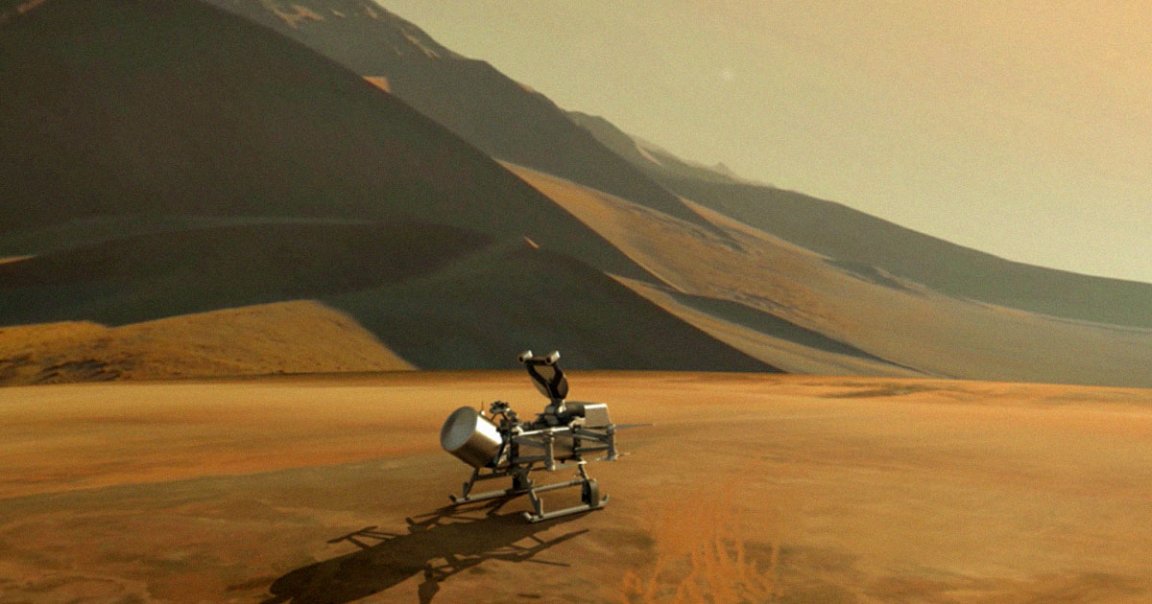
Saturn’s Arrakis
A good chunk of Saturn’s largest moon Titan is covered in massive dunes.
But how they got there in the first place remains a bit of a mystery. Prevailing theories have suggested that organic material formed in the moon’s thick atmosphere, and then rained down to the surface.
Now, as New Scientists reports, scientists have come up with a revised explanation. They suggest that the sand may be the crumbling remains of irregular moons that were captured in Titan’s orbit and started colliding with each other, eventually grinding down to dust — an intriguing glimpse into the ancient history of the second-largest moon in the solar system.
Moon Cries
Southwest Research Institute senior research scientist Bill Bottke and his colleagues observed that the particles found in the moon’s sand dunes were far too strong to be the result of organic materials being created in its atmosphere. The particles that Titan’s moons are made of are also roughly the same size as the particles of the dunes.
As a result, the team suggests that small satellites may have worn each other down over time, releasing material that would then rain down to form the sand dunes below.
“Irregular satellites collisionally grind really effectively,” Bottke told New Scientist. “Titan gets on the order of about 10 [to the power of six] kilometers cubed of material, and that’s several times more than the dunes.”
In other words, these collisions generate more than enough material to account for Titan’s dunes.
To bolster their theory, Bottke and his colleagues suggest examining existing particles in Titan’s atmosphere, which would differ from organically formed particles.
“It might even be possible to test it with the data we have from the Cassini-Huygens mission,” NASA scientist Michael Malaska told New Scientist, likely referring to the mission’s Huygens probe, which parachuted down to Titan’s surface in 2005.
In addition to existing data, NASA is also planning to launch a dual-quadcopter drone called Dragonfly to explore the surface of Titan in 2026, which could help solve the mystery once and for all.
More on Titan: Scientists Attempt to Explain “Magic Islands” on Saturn’s Largest Moon